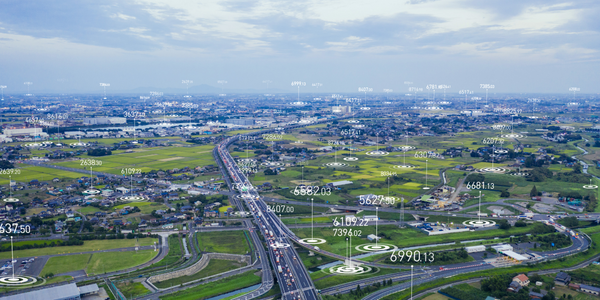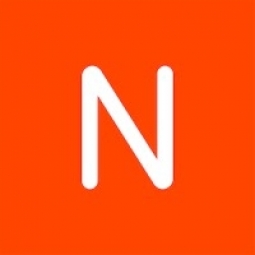Download PDF
Scalable Policy Management Helps Carnegie Robotics Earn ISO 9001:2008 Certification
Technology Category
- Functional Applications - Enterprise Resource Planning Systems (ERP)
Applicable Functions
- Business Operation
Use Cases
- Regulatory Compliance Monitoring
Services
- System Integration
The Challenge
Carnegie Robotics, founded in 2010, initially focused on research and development with a small portion of the company’s resources devoted to manufacturing. However, with a rapidly growing manufacturing business and contracts with the government, the company found it increasingly difficult to manage their ever-growing collection of policies and assembly instructions through email and spreadsheets. The company needed a robust policy management system that could accommodate its growth and the need to mature its business processes.
About The Customer
Carnegie Robotics, LLC (CRL), is an ISO 9001:2008 certified supplier of reliable and advanced robotics sensors and platforms for defense, agriculture, mining and commercial applications. CRL has grown steadily since its founding in 2010 by fulfilling the increasing demand for reliable and environmentally robust components that provide perception and intelligence for autonomous systems. In addition, CRL partners with major equipment suppliers to deliver disruptive, automated systems to traditional markets. The company has grown significantly, moving into a 42,000 square foot facility and doubling in size in two years.
The Solution
Carnegie Robotics turned to PolicyTech to help them effectively manage their growing number of policies and procedures. PolicyTech was used to confirm that people have read the policies required by some of their government contracts. The software was also used for a unique purpose – storing assembly instructions. This was crucial for building products for the government where configuration management is very important. PolicyTech was used to control versions of assembly instructions to ensure that new versions were distributed to assemblers quickly and uniformly. The software also helped the company identify issues that needed to be addressed, allowing them to automate the process, identify failure points, and correct them in a timely fashion.
Operational Impact
Quantitative Benefit
Related Case Studies.

Case Study
Remote Monitoring for Environmental Compliance
Emerson wanted to provide a connected environmental analyzer to their customers. They wanted to leverage IoT technologies to provide a software solution that was easy to use, real-time and centralized. Compliance with pollution control board guidelines and the ability to remotely calibrate and troubleshoot these devices was the primary objective. Requirements - Centralized Remote Monitoring. - IoT Based Smart Environmental Analyzers. - Remote Calibration and Troubleshooting. - User Friendly Application. - Reporting & Dashboards. - Compliance with pollution control board guidelines.

Case Study
ELI LILLY ADOPTS MICROMEDIA’S ALERT NOTIFICATION SYSTEM
Pharmaceutical production is subject to a strict set of enforced rules that must be adhered to and compliance to these standards is critically necessary. Due to the efforts of WIN 911’s strategic partner Micromedia, Lilly was able to adopt an alarm notification infrastructure that integrated smoothly with their existing workflows and emergency hardware and protocols. These raw energy sources enable the industrial process to function: electricity, WIN-911 Software | 4020 South Industrial Drive, Suite 120 | Austin, TX 78744 USA industrial steam, iced water, air mixtures of varying quality. Refrigeration towers, boilers and wastewater are monitored by ALERT. Eli Lilly identified 15000 potential variables, but limitations compelled them to chisel the variable list down to 300. This allowed all major alarms to be covered including pressure, discharge, quantity of waste water discharged,temperature, carbon dioxide content, oxygen & sulphur content, and the water’s pH.

Case Study
IoT Solutions Give Commercial Fishing Real-time insights
Technology to support vessels in the commercial fishing industry had not changed significantly since the advent of radar. Over the past 40 years commercial fishing in the United States has continued to be one of the most active, yet regulated industries. The combination of federal regulations and lack of technology created an opportunity for Faria Watchdog to go-to-market with a solution.
Case Study
Digital Transformation of FOSIS through AuraQuantic Platform
The Solidarity and Social Investment Fund (FOSIS), a service of the Chilean Government, was faced with the challenge of standardizing its administrative processes to comply with the new regulatory framework established by the Law of Digital Transformation of the State (LTDE). The LTDE focuses on updating administrative procedures and document management in public administration through digital transformation. It also mandates that all communication related to administrative procedures between different public bodies must be carried out electronically. FOSIS had been using the AuraQuantic platform for over 14 years to automate different internal processes. However, with the introduction of the new LTDE framework, the institution needed to launch an ambitious project to align with the new regulations.
Case Study
Big risks requires big data thinking: helping clients target and prevent fraud
EY's clients are increasingly seeking growth in markets with higher perceived levels of fraud, bribery, and corruption risk. Regulators and law enforcement bodies are intensifying their activities, leading to significant corporate investment in employee training, policy development, and internal audit procedures designed to raise awareness of anti-fraud or anti-corruption policies. Many companies have also increased the use of more sophisticated, proactive uses of forensic data analytics (FDA) capabilities designed to prevent and detect areas of fraud, waste, and abuse. However, traditional rules-based tests and spreadsheet tools are not effective in managing these risks. EY needed a solution that could help them get ahead of the curve and squash potential threats before they escalate.
Case Study
Fresenius Medical Care AG & Co. KGaA optimizes external financial reporting
Fresenius Medical Care wanted to optimize its reporting process, particularly in light of the increased demands made by regulatory authorities on external financial reporting. The preparation of financial reports in accordance with international accounting standards (IFRS and US-GAAP [Generally Accepted Account Principles]) as well as in different currencies (Euro and US dollars) is a very complex and expensive process. The legal importance and reputational value of these standardized quarterly and annual reports for listed companies require the financial reports to be of a consistently high quality. However, the requirements for the structure and content of these reports are constantly increasing, while the submission deadlines get tighter.





